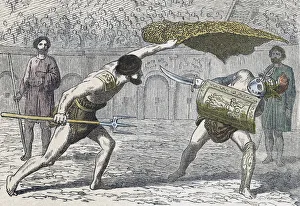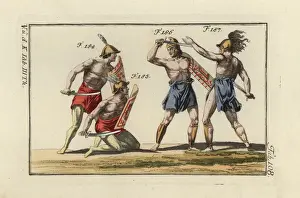Samnite Collection
In this captivating collection of artworks and historical depictions, we delve into the intriguing world of the Samnites
All Professionally Made to Order for Quick Shipping
In this captivating collection of artworks and historical depictions, we delve into the intriguing world of the Samnites, an ancient Italic people who played a significant role in Roman history. One such tale tells of Curius Dentatus, a noble Roman figure known for his integrity and refusal to succumb to bribery. In a vividly colored engraving from Ancient Rome, we witness Curius Dentatus standing tall as he resolutely rejects bribes offered by the Samnites. This act of moral fortitude is further emphasized in another artwork - a mesmerizing mosaic floor depicting gladiators engaged in combat. Here, amidst the fierce spectacle, Curius Dentatus remains steadfast in his principles. The Musee du Louvre houses an enchanting fresco attributed to Lumi that portrays Curius Dentatus refusing gold from the Samnites within his humble abode. The intricate details captured by this engraving transport us back to Milan in 1867 when it was acquired. Manius Curius Dentatus' unwavering character is also immortalized through artistry; John Leech's 1852 piece showcases him declining a magnificent gift presented by the Samnites while donning their distinctive attire. Another masterpiece by Leech depicts a brave Samnite soldier adorned with armor and weapons - an embodiment of their warrior spirit. As we explore further into Roman history, we stumble upon William Ward's painting titled "The Samnite Marriage. " This evocative artwork captures an intimate scene where two individuals unite under traditional customs, shedding light on aspects of daily life during that era. Our journey concludes with glimpses into Pompeii's rich heritage. In one image taken at The House of Faun dating back to the 2nd century BC, we catch sight of Italy's cultural tapestry intricately woven within its walls.

















